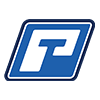How to Maximize the Revenue of Your Eddy Current Chassis Dynamometer
Owning a chassis dynamometer can offer payback in as little as eight months.
Some service shops consider eddy current (EC) chassis dynamometers a luxury item. However, many truck service depots and dealerships have the opposite view — and have incorporated chassis dynamometers as critical components of their business plans. These dynamometer owners are making their investment back in as little as eight months. Afterwards, all additional profit generated by the dyno is used to expand customer base, staff and facilities.
To determine the return on investment of an EC chassis dynamometer, start by understanding possible ways to minimize the initial investment and maximize revenue. Following is a breakdown of expenses, cost savings and potential income which can be combined to help you calculate your break-even time and then some.
Expenses, Cost Savings, and Potential Income
1. Lower Initial Investment for Eddy Current Dynamometer
An eddy current (EC) chassis dynamometer offers a lower initial investment and long-term operating cost by eliminating the installation, repairs and maintenance costs of a water brake absorption system. The electrically controlled, air-cooled EC brakes create load by inducing magnetic fields in rotating absorbers. The absorbers produce heat that is dissipated into the air in the test cell.
Costs to consider:
- EC chassis dynamometer base package
- Freight of equipment from manufacturer
- Facility bay construction
2. EC Chassis Dynos Economically Retrofit Into Most Pits
The electrically controlled EC chassis dynamometer only requires a pit and a 220 VAC/40 Amp electrical circuit. There are multiple variables in the installation process, however, dependent on your facility and location. EC chassis dynos can retrofit economically into most existing pits. They also can be installed as surface-mount units with an accompanying ramp system where a pit is not practical. Additionally, in southern climates, they can be installed outdoors, which eliminates the need for an exhaust hood system and other test cell considerations.
Costs to consider:
- Manufacturer installation labor
- Exhaust hood system and installation labor (if located indoors)
- Pit construction, concrete work and labor
- Pit evacuation pump
- Commissioning labor
- Training
- Miscellaneous travel expenses
3. Operation and Incremental Revenue for a Chassis Dynamometer
The average dynamometer facility might run three to four tests on its chassis dynamometer every day. Common charges range from $200 to $500 and require 25 to 60 minutes of time, including mounting the vehicle.
Power Test EC chassis dynamometers offer ease of serviceability compared to competitor brands. Features such as belt-driven design, direct coupled absorbers, pneumatic disc brakes and steel flex disc couplings require less maintenance. Lubrication is easily performed through a single point manifold. And materials such as four-bolt roller bearings; thick-walled, corrosion-resistant frames (with lifetime warranty); and thick-walled rolls (also a lifetime warranty) with traction siping provide long-lasting use.
Revenue and costs to consider:
- Test billing time
- Utilities
- Labor
- Preventive maintenance
4. Serving as a Test Facility Generates Incremental Revenue
Some truck service facilities schedule time for other shops to bring vehicles in for validation testing or controlled break-ins after a rebuild. When using a computer system to automate testing controls and data acquisition, reports are easily and consistently printed out for technicians to provide to their customers.
Revenue and costs to consider:
- Test billing time
- Utilities
- Labor
- Preventive maintenance
5. Incremental Service Parts and Labor Revenue
When a vehicle is mounted to a chassis dynamometer for performance testing, technicians often identify new driveline, vehicle or engine control system problems during the inspection and power test, leading to additional shop work. On average, about one-third of tests performed could identify incremental service jobs that can create an additional $300 or more in revenue each.
Revenue and costs to consider:
- Labor
- Parts
6. Elimination of “Come-Backs”
By testing trucks on a dynamic chassis dyno, real-world conditions such as fully loaded trailers and varying road inclinations can be simulated, eliminating the liability exposure of on-road test drives, the need for employees to have Commercial Driver’s Licenses, and potential traffic jams or breakdowns during road tests.
By testing the truck in simulated conditions that replicate what your customer will encounter in the real world, you greatly increase your chances of verifying the job has been done correctly and your customer’s problem has truly been resolved. The last thing you want is a customer to leave your shop thinking the problem was fixed, only to experience it again when they are hundreds of miles away and need to stay safe and on schedule.
Cost SAVINGS to consider:
- Improved “fix it right the first time” performance
- Reduced re-work repairs and schedule disruptions
- Greater customer satisfaction, loyalty, and repeat business
7. Proper Utilization of Skilled Technicians and Reduced Liability
Your technicians are experts at repairing trucks. You don’t need them on the road, battling traffic and taking up valuable time to road test their work. A chassis dyno can be run more efficiently and provide better real-world simulation than a road test. The end result is more time billing labor on new jobs and no more test drive-related headaches.
Cost SAVINGS to consider:
- Elimination of liability claims for road test accidents or incidents
- Elimination of traffic jam time loss
- Technicians freed up to conduct productive repair work
- No need to track what technicians are doing during test drives
- No need to maintain a loaded trailer onsite for road-test simulations
At Power Test, we have many tools to help customers estimate investment costs and calculate payback. Contact us today to talk more about how an EC chassis dynamometer can help you build or expand your business.



